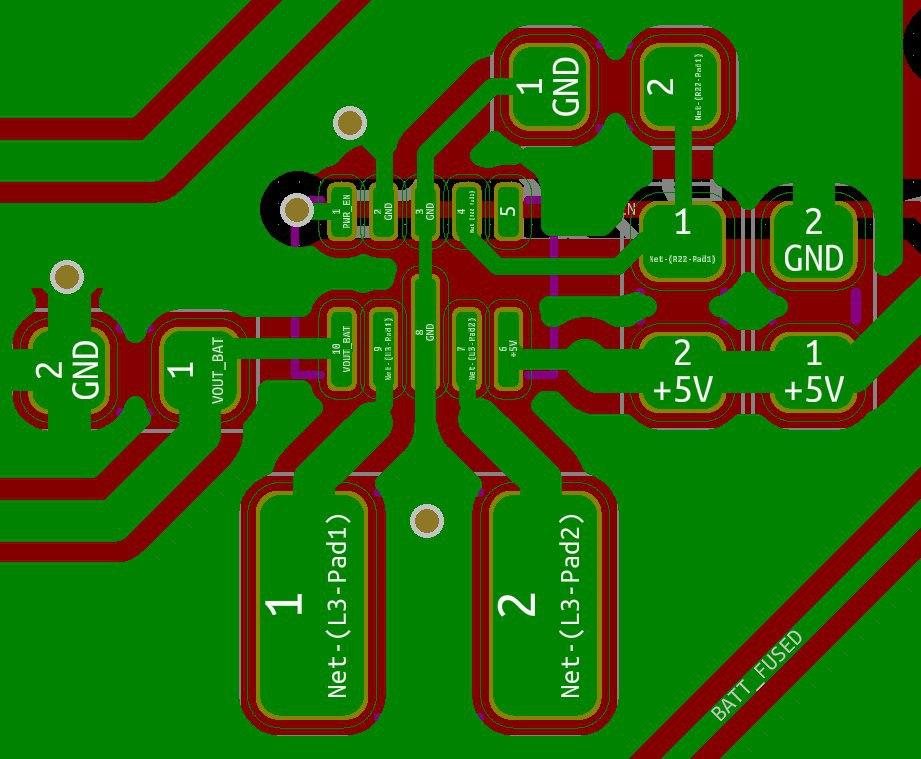Other Parts Discussed in Thread: BQ24073
Hello,
I've designed a board that uses a TPS63802.
Its input is the output of a BQ24073, which, as I'm sure you already know, is a battery management IC able to automatically adjust the power path depending if the battery is charging or not.
From the voltage output of the BQ24073, which may be 3.7V or 4.8V from USB, I need to get 5V. I've chosen the TPS63802 because the max input would be too close from the desired output for a boost regulator to work.
Thing is, I've already burnt 6 pieces of it. No matter what I do, the moment I pull the EN pin high, the IC gets instantly hot and the output fixes at 0.4V. I've checked solders, the rest of the circuit, etc. and even done several tests on a naked board where I only soldered this IC an related passives, all with the same results.
This is the layout (please note it's the bottom layer of the PCB):
Note VOUT_BAT net is the output of the BQ24073.
Feedback resistor values are 806k and 91k respectively, as the datasheet states. Inductor is LQH32PNR47NNCL from Murata, I believe it meets the requirements. Input and output caps are CC0603MRX6S5BB226 from Yageo, 22uF.
Can anyone lend a hand? I'm really desperate about this :(
Best regards,
Enrique



